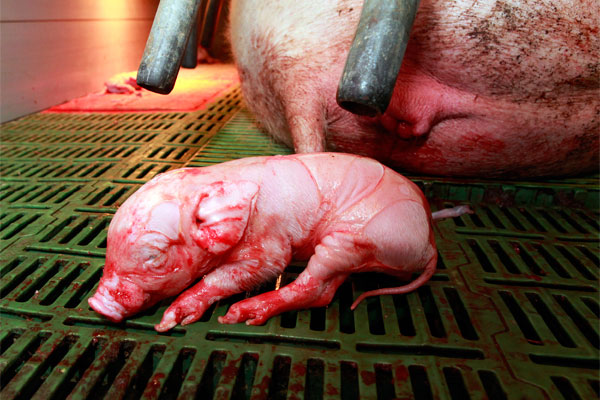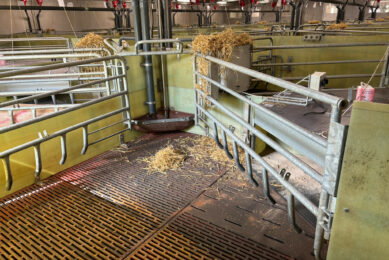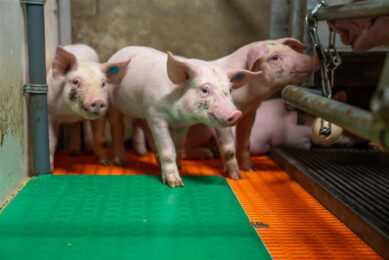A piglet’s first few hours determine its survival

Joint British, Norwegian and Danish studies have shown that the body temperature of newborn piglets one and two hours after birth is strongly related to survival until weaning.
From a stable temperature of between 39 and 40 degrees in the uterus, piglets are born into an environment that is significantly colder and in which they on the whole have to maintain their own body temperature. This transition leads to a drop in body temperature of between 2 and 4 degrees immediately after birth, and there are large differences in how efficiently the piglets recover from this condition. Piglets that do not overcome hypothermia quickly and efficiently die as a direct result of hypothermia, but also from hunger, crushing and disease later in the lactation period.
Therefore, a recently completed PhD project focused on the first few hours immediately following birth. The purpose of the project was to identify characteristics of the piglets that recover successfully from the critical cooling after birth and those that do not. PhD Trine Sund Kammersgaard examined these issues in both loose-housing farrowing pens and conventional farrowing crates.
In addition, the aim was to investigate and document the thermal requirements of newborn piglets in the first three hours after birth and to develop new methods for assessing hypothermia in pigs.
These issues have been examined in three different experiments that were carried out partly in experimental units at AU Foulum and partly in intensive trials in respiratory chambers at Wageningen University in the Netherlands.
In the first study Trine Sund Kammersgaard identified three factors that have a direct impact on the body temperature of the pigs two hours after birth. Ranked in order of priority these are: birth weight, how much time the pigs spend at the udder in the second hour after birth, and how much time the pig spends at the udder in the first hour after birth.
- We expected that the birth process and the piglets’ position in the birth order could have an impact on their recovery from hypothermia. However, this turned out not to be the case. The result does not tell us whether it is colostrum or the heat from the sow that has an effect on piglet body temperature at two hours of age, but it nevertheless gives us a better idea of where we should focus our attention in future studies and in practice, says Trine Sund Kammersgaard.
From her studies in the Netherlands she has produced results that suggest that piglet heat requirements in the first few hours are higher than previously thought.
- Based on earlier studies, which have all involved piglets more than two hours old, the recommended temperature for the piglet birthing environment has for many years been 34 degrees. The new study has shown that although the pigs overcame the initial hypothermia at both 34 degrees and 38 degrees room temperature, the pigs in the 34 degrees room spent approximately 50% more energy during the first three hours to achieve the same result as the pigs at 38 degrees room temperature, explains Trine Sund Kammersgaard and continues:
- This has practical implications because the piglets come with very limited body reserves and insulation and there is strong competition at the sow’s udder. Therefore, it is essential for pig survival that the piglet does not have to use too much energy to keep warm.
New tools to assess hypothermia in pigs
In practice it is not possible to measure the rectal temperature of all pig. In an experimental context it is important that the measuring methods used are the least intrusive for the animals so as to not affect the results.
Therefore, a focus of Trine Sund Kammersgaard’s PhD project was to develop and test new methods for assessing piglet condition without unnecessary intervention. The methods tested included behavioural observations of lying posture and position, assessment of how much the piglets shiver, and the use of thermographic measurements of body surface temperature. All of these methods appear promising in the assessment of piglet hypothermia.
- While the starting point of the project was that piglets die because of early hypothermia, the results of this and other projects show that piglets respond well to improvements of their environment. It is therefore possible for us to do something about it, and we can spot the piglets that are still at risk, says Trine Sund Kammersgaard who defended her doctoral thesis on 3 September at AU Foulum.
Source: Aarhus University











